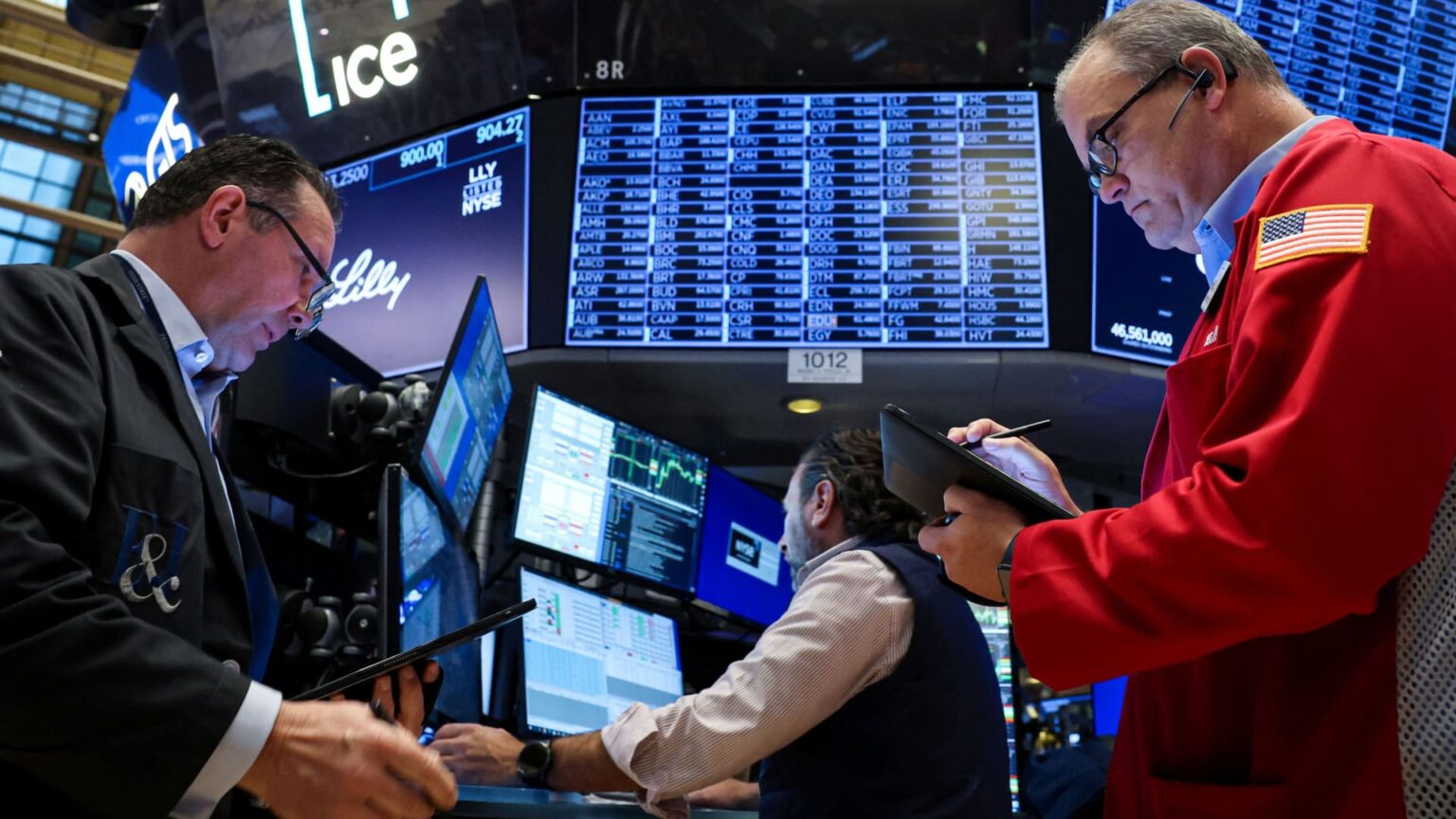Traders work on the floor at the New York Stock Exchange on Oct. 24, 2024.
Brendan McDermid | Reuters
Stocks typically rise after a presidential election, but investors need to be prepared for some short-term choppiness first, history shows.
The three major benchmarks on average have seen gains between Election Day and year-end in the presidential election year going back to 1980, according to CNBC data. However, investors should not be expecting a straight shot up in the market after polls close.
The S&P 500 after the election
| Election Date | Day After | Week After | Month Later | Year End |
|---|---|---|---|---|
| 11/3/2020 | 2.20% | 5.23% | 8.83% | 11.48% |
| 11/8/2016 | 1.11% | 1.91% | 4.98% | 4.64% |
| 11/6/2012 | -2.37% | -3.77% | -1.01% | -0.15% |
| 11/4/2008 | -5.27% | -10.62% | -15.96% | -10.19% |
| 11/2/2004 | 1.12% | 2.97% | 5.29% | 7.20% |
| 11/7/2000 | -1.58% | -3.42% | -6.17% | -7.79% |
| 11/5/1996 | 1.46% | 2.16% | 4.23% | 3.72% |
| 11/3/1992 | -0.67% | -0.31% | 2.38% | 3.76% |
| 11/8/1988 | -0.66% | -2.48% | 0.52% | 0.93% |
| 11/6/1984 | -0.73% | -2.61% | -4.49% | -1.86% |
| 11/4/1980 | 2.12% | 1.72% | 5.77% | 5.21% |
| Average | -0.30% | -0.84% | 0.40% | 1.54% |
| Median | -0.66% | -0.31% | 2.38% | 3.72% |
Source: CNBC
In fact, the three indexes have all averaged declines in the session and week following those voting days. Stocks have tended to erase most or all of those losses within a month, CNBC data shows.
This means investors should not be anticipating an immediate pop on Wednesday or the next few days after.
The Dow after the election
| Election Date | Day After | Week After | Month Later | Year End |
|---|---|---|---|---|
| 11/3/2020 | 1.34% | 7.06% | 9.06% | 11.38% |
| 11/8/2016 | 1.40% | 3.22% | 6.99% | 7.80% |
| 11/6/2012 | -2.36% | -3.70% | -1.30% | -1.07% |
| 11/4/2008 | -5.05% | -9.68% | -12.98% | -8.82% |
| 11/2/2004 | 1.01% | 3.49% | 5.47% | 7.45% |
| 11/7/2000 | -0.41% | -2.48% | -3.06% | -1.51% |
| 11/5/1996 | 1.59% | 3.04% | 5.85% | 6.04% |
| 11/3/1992 | -0.91% | -0.83% | 0.74% | 1.50% |
| 11/8/1988 | -0.43% | -2.37% | 0.67% | 1.93% |
| 11/6/1984 | -0.88% | -3.02% | -5.92% | -2.62% |
| 11/4/1980 | 1.70% | 0.73% | 3.55% | 2.86% |
| Average | -0.27% | -0.41% | 0.83% | 2.27% |
| Median | -0.41% | -0.83% | 0.74% | 1.93% |
Source: CNBC
That is especially true given the chance that the presidential race, which is considered neck-and-neck, may not be called by Wednesday morning. America may also need to wait for close Congressional races to have final counts for determining which party has control of either house.
The Nasdaq Composite after the election
| Election Day | Day After | Week After | Month Later | Year End |
|---|---|---|---|---|
| 11/3/2020 | 3.85% | 3.52% | 10.90% | 15.48% |
| 11/8/2016 | 1.11% | 1.58% | 4.31% | 3.65% |
| 11/6/2012 | -2.48% | -4.25% | -0.75% | 0.25% |
| 11/4/2008 | -5.53% | -11.19% | -18.79% | -11.41% |
| 11/2/2004 | 0.98% | 2.95% | 8.00% | 9.61% |
| 11/7/2000 | -5.39% | -8.12% | -19.41% | -27.67% |
| 11/5/1996 | 1.34% | 2.23% | 5.78% | 5.04% |
| 11/3/1992 | 0.16% | 3.83% | 8.56% | 11.97% |
| 11/8/1988 | -0.29% | -1.77% | -0.96% | 0.67% |
| 11/6/1984 | -0.32% | -1.08% | -4.58% | -1.27% |
| 11/4/1980 | 1.49% | 0.97% | 6.75% | 4.76% |
| Average | -0.46% | -1.03% | -0.02% | 1.01% |
| Median | 0.16% | 0.97% | 4.31% | 3.65% |
Source: CNBC
The “election is now center stage as the next catalyst for financial markets,” said Amy Ho, executive director of strategic research at JPMorgan. “We caution that uncertainty could linger on the outcome as the timeline for certifying election results could take days for the presidential race and weeks for the House races.”
This election comes amid a strong year for stocks that has pushed the broader market to all-time highs. With a gain of about 20%, 2024 has seen the best first 10 months of a presidential election year since 1936, according to Bespoke Investment Group.
https://www.cnbc.com/2024/11/04/what-the-stock-market-typically-does-after-the-us-election-according-to-history.html


